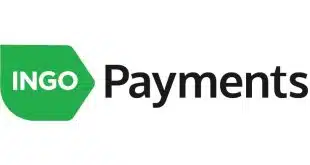With the coming of debit card interchange regulation and more merchant freedom from payment card network operating rules, Visa Inc. has established what it calls “strategy teams” to develop alternatives and respond once the Federal Reserve issues new rules next year. That’s the word from Visa chief financial officer Byron H. Pollitt Jr., who at a Tuesday investor conference addressed implications of the Dodd-Frank financial reform legislation that President Obama signed July 21.
The reform law’s so-called Durbin Amendment gives the Fed power to regulate debit card interchange and requires that debit cards carry the logos of at least two unaffiliated networks. The latter provision could be bad news for Visa, which has many deals with banks to issue debit cards with the Visa logo on the front for signature transactions and the logo of the Visa-owned Interlink network on the back for point-of-sale PIN-debit transactions. Also having the logo of an unaffiliated PIN-debit network on the back of a Visa debit card, such as First Data Corp.’s Star, would give a merchant another routing choice and possibly a cheaper transaction for PIN debit.
“Our view on the legislation is that this is much more aimed at PIN debit than signature,” Pollitt said at the Barclays Capital 2010 Global Financial Services Conference in New York. In August, Visa executives told Goldman Sachs & Co. analysts that they expect Interlink to take a “double-digit” volume hit after the ban on debit cards with access only to affiliated networks.
Visa dominates the U.S. signature debit market and is a major force in PIN debit through Interlink. According to Pollitt, U.S. debit transactions generate 16% of Visa’s net revenues. Two-thirds of debit transactions are signature-based and the remaining third are PIN-based. For fiscal 2010’s first nine months ended June 30, Visa’s net revenues were $5.95 billion, which means debit brought in about $951.7 million through data-processing fees and other network charges. Visa sets debit interchange to be paid by acquirers to issuers, but does not receive any of that huge revenue stream. But if reduced interchange rates somehow causes issuers to deemphasize debit, and merchants divert PIN-debit transactions to other networks, Visa would lose revenue-generating transactions. Pollitt, however, said he expects the financial implications to be “manageable.”
Visa first met with Fed staff members just two days after Obama signed the bill. Pollitt said that Visa’s goal is to educate the Fed about card payments, but he added that Visa has no idea what the Fed will come up with in its regulations, which are supposed to be out by mid-2011. “They’ve given us no indication,” Pollitt said. “They’re very much in study and assess mode.”
In the meantime, Visa has established what it calls strategy teams charged with anticipating “a range of different outcomes [from the Fed] … so we can get to market quickly with the adjustments that are appropriate,” Pollitt said. He did not delve into specifics, but said Visa is entertaining the possibility of unbundling certain network services and the associated pricing. Such a change could affect both card issuers and merchant acquirers, but mostly acquirers. “I think this will lead to more a la carte pricing,” he said.
The presumably lower, regulated interchange rates from the Fed will affect only those debit card-issuing financial institutions with $10 billion or more in assets. Asked if Visa would be able to configure its network software to determine the issuer’s proper interchange at the point of sale by the time the Fed discloses its rules, Pollitt said, “no.” A moment later he added, “To the degree that we have studied this, it is absolutely not clear how we would implement it, so we don’t have a solution, much less a timetable. Again a topic not discussed during the legislative process. The practicalities of implementation were all left to the Fed.”
While the Fed grinds through the rules-setting process, Visa continues to recover from the recession—with debit more popular than ever. In a sneak peek at its soon-to-end fiscal fourth quarter, Visa on Tuesday said aggregate U.S. payments volume grew 14% in July and 12% in August over the year-earlier months. Debit payment volume grew 21% in July and 18% in August, while credit volumes grew 7% and 5% in July and August, respectively. Pollitt attributed the growth to consumers beginning to spend again, but also to the long-term secular growth of card payments at the expense of cash and checks.







